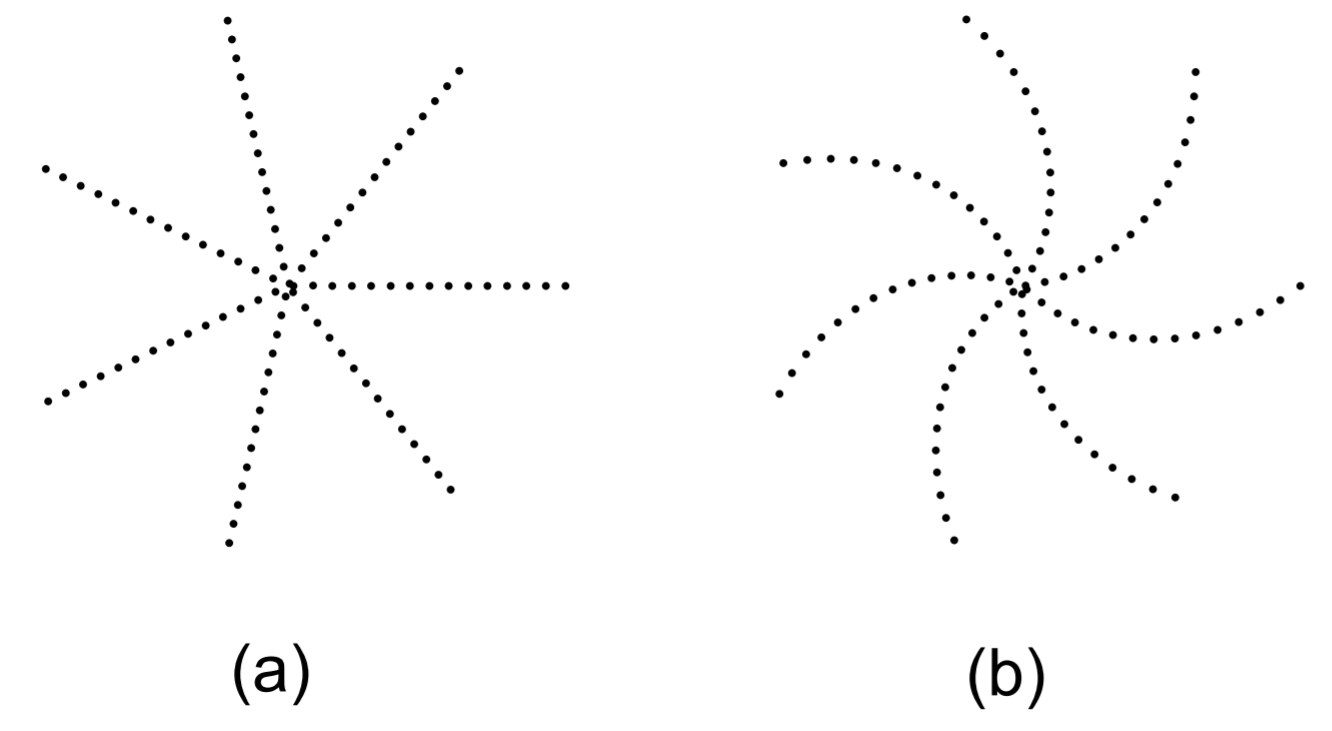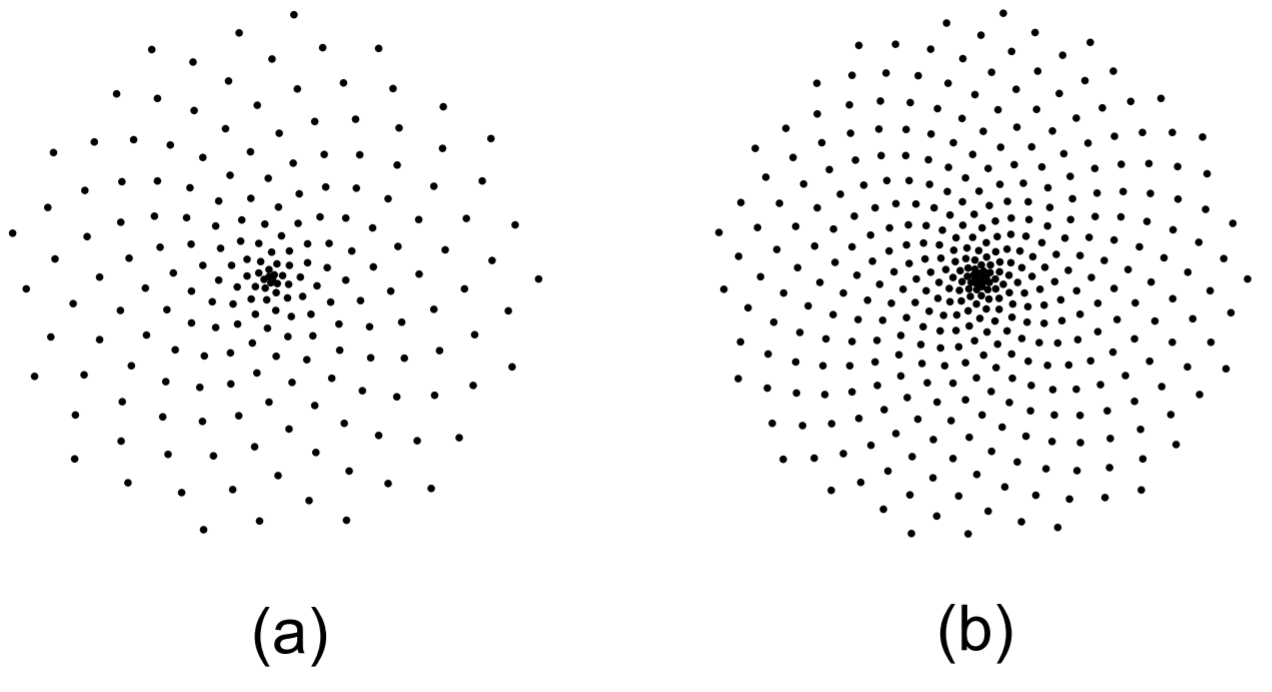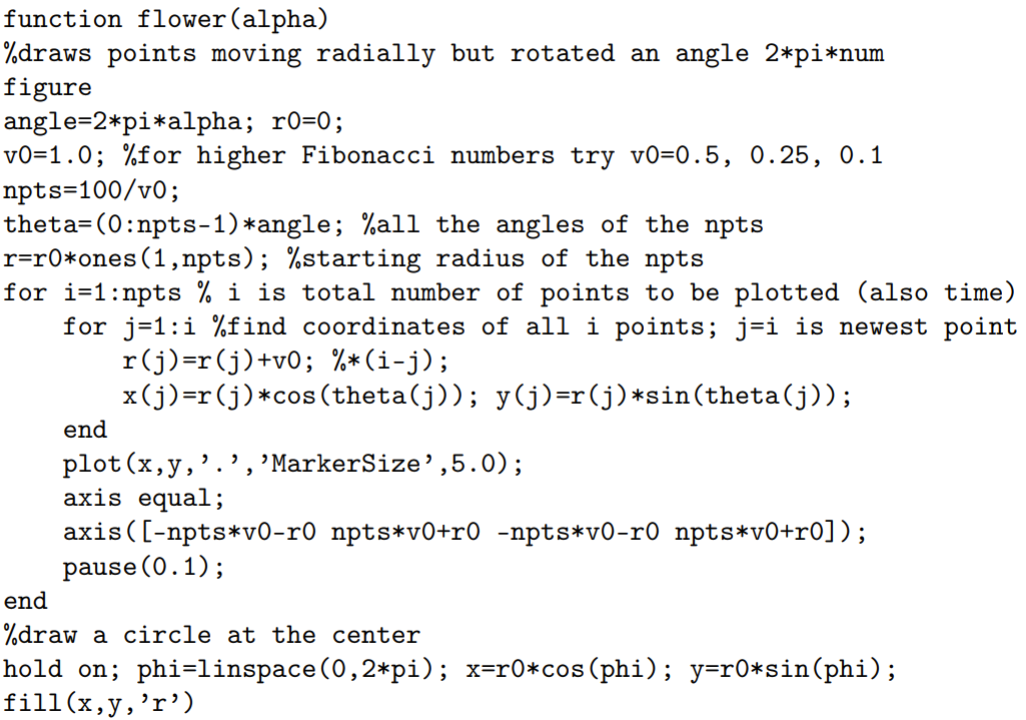2.3: The Fibonacci Numbers in a Sunflower
- Page ID
- 93496
Consider the photo of a sunflower shown in Fig. 2.1, and notice the apparent spirals in the florets radiating out from the center to the edge. These spirals appear to rotate both clockwise and counterclockwise. By counting them, one finds 34 clockwise spirals and 21 counterclockwise spirals. The numbers 21 and 34 are notable as they are consecutive numbers in the Fibonacci sequence.
Why do Fibonacci numbers appear in the sunflower head? To answer this question, we construct a very simple model for the way that the florets develop. Suppose that during development, florets first appear close to the center of the head and subsequently move radially out with constant speed as the sunflower head grows. To fill the circular sunflower head, we suppose that as each new floret is created at the center, it is rotated through a constant angle before moving radially. We will further assume that the angle of rotation is optimum in the sense that the resulting sunflower head consists of florets that are well-spaced.

Let us denote the rotation angle by \(2 \pi \alpha\). We first consider the possibility that \(\alpha\) is a rational number, say \(n / m\), where \(n\) and \(m\) are positive integers with no common factors, and \(n<m\). Since after \(m\) rotations florets will return to the radial line on which they started, the resulting sunflower head consists of florets lying along \(m\) straight lines. Such a sunflower head for \(\alpha=1 / 7\) is shown in Fig. \(2.2 \mathrm{a}\), where one observes seven straight lines. Evidently, rational values for \(\alpha\) do not result in wellspaced florets. This figure and subsequent ones were produced using MATLAB, and the simulation code is shown at the end of this subsection.
What about irrational values? No matter how many rotations, the florets will never return to their starting radial line. Nevertheless, the resulting sunflower head may not have well-spaced florets. For example, if \(\alpha=\pi-3\), then the resulting sunflower head looks like Fig. 2.2b. There, one can see seven counterclockwise spirals. Recall that a good rational approximation to \(\pi\) is \(22 / 7\), which is slightly larger than \(\pi\). On every seventh counterclockwise rotation, then, the new floret falls just short of the radial line followed by the floret from seven rotations ago.
The irrational numbers that are most likely to construct a sunflower head with well-spaced florets are those that can not be well-approximated by rational numbers. Here, we choose the so-called golden angle, taking \(\alpha=1-\phi\), so that \(2 \pi(1-\phi) \approx 137.5^{\circ}\), and perform clockwise rotations. The rational approximations to \(1-\phi\) are given by \(F_{n} / F_{n+2}\), so that the number of spirals observed will correspond to the Fibonacci numbers.
Two simulations of the sunflower head with \(\alpha=1-\phi\) are shown in Fig. \(2.3\). These simulations differ only by the choice of radial velocity. In Fig. \(2.3 \mathrm{a}\), there can be counted 13 clockwise spirals and 21 counterclockwise spirals; in Fig. \(2.3 \mathrm{~b}\), there are 21 counter clockwise spirals and 34 clockwise spirals, just like the sunflower head shown in Fig. 2.1.





